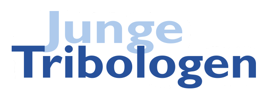Interview with Prof. Dr.-Ing. Tim Hosenfeldt
What are your hobbies?
I used to play tennis with great pleasure and success. Currently, I am particularly passionate about winter sports such as bobsleighing, skiing and Nordic skiing, as well as all the equipment preparation that is involved there. So these are definitely tribologically related hobbies. I also enjoy sailing and international cultures. The latter on vacation, in my own family, but also in everyday business life. In other words, the differences, but above all the many similarities.
Where do you work and what’s your position?
I am Senior Vice President for Corporate Research and Innovation & Central Technology at Schaeffler AG. This also includes topics around materials, lubricants, surface technology, sealing technology and tribology, as well as corporate research from the idea to the final product. Furthermore, I am honorary professor at the Friedrich-Alexander-University Erlangen-Nuremberg (FAU) and giving the course “tribology and surface technology” at the Engineering Design Institute (KTmfk).
How did you end up in the field of tribology?
I was already very interested in topics of holistic product optimization over the entire product life cycle since my student and doctoral days. This naturally includes the design, but also the manufacturing, e.g. topics around the wear protection of tools and, of course, the usage, where products have to fulfill the most diverse requirements in terms of service life or energy efficiency. This obviously brings us very quickly to friction, wear and the field of tribology. I am therefore interested in how to optimize a product so that it leaves the smallest possible footprint. Thereby, tribology and surface technology need to be considered as design elements at a very early stage of product development.
If you were to explain “Good Friction and Bad Friction” in the “Sendung mit der Maus”, how would you do that?
It is not desired to minimize friction in every case. Without friction, movement is not possible in our daily lives – and this includes driving cars in an efficient, safe and convenient way. Both involve requirements that can only be met if different friction conditions interact in the desired fashion – similar to a classic cross-country skier: The skier needs in his tribological system – consisting of the shape of the skis, their sliding surfaces, and the snow – friction will remain as low as possible when going downhill. By contrast, when going uphill, the skier ideally requires adhesive friction to move up the hill quickly and without having to use too much energy.
Do you have any favorite anecdote about the broad field of tribology?
I still remember discussions with large vehicle manufacturers in the early 2000s. At that time, especially in the U.S. market, there was practically no interest in friction reduction and energy efficiency. Today things are completely different, people have recognized that this is directly linked to CO2 savings and nowadays also to direct monetary benefits. The topic of tribology is therefore more relevant and present today than ever before. And that is very satisfying and positive.
If you had one wish with the “Young Tribologists”, what would you wish for?
I would like to see young academics and tribologists highlighting and promoting the relevant topics around tribology and especially the benefits of low friction and high wear resistance in an industrial context and in everyday life. The young people in particular are very good at exemplifying and illustrating this and pushing the topics with their enthusiasm and motivation not only theoretically but also with very practical benefits.
Which trends would you see in the field of tribology, especially which applications do you think would gain increasing importance in the future?
Topics such as sustainability and efficiency, i.e. how to systematically reduce friction and wear with a good cost to benefit and sustainability ratio, will certainly continue to dominate. Increasing lightweight design for reduced masses and a low environmental footprint, as well as the associated increased demands on tribological systems, are also major issues. In addition, it is necessary to optimize the products with regard to a wide range of requirements and functions. E-mobility will certainly represent a major challenge in the near future. Besides that, I also see tribotronic and adaptive systems as well as the use of artificial intelligence for the design and control of tribological systems as areas with large potential.
What do you think are the three most relevant competences for somebody working in the field of tribology?
Above all, it requires a holistic systems thinking and understanding, as well as a willingness to work with people from a wide range of disciplines since tribology is a very interdisciplinary field.
